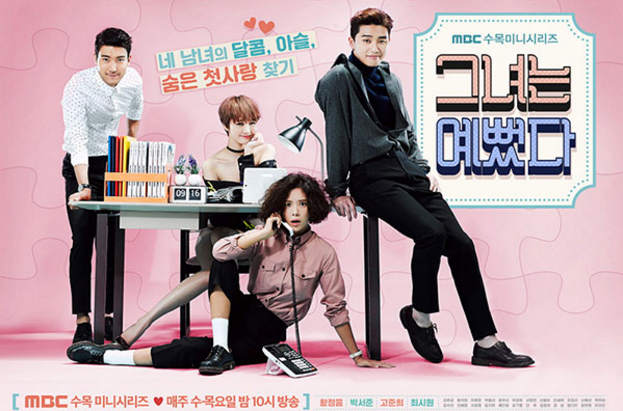![Korean dramas, such as the trendy “She Was Pretty,” have captured the hearts of viewers worldwide. [Munhwa Broadcasting Corporation]](http://www.jstudentboard.com/reporter/wp-content/uploads/2015/11/Kdramz-300x198.jpg)
Korean dramas, commonly referred to as “K dramas,” are television series that usually air on a weekly schedule. Each episode is one hour long, with series ranging from 16 episodes to 30 episodes. Although they air on Korean television stations, they are readily accessible with subtitles on websites such as DramaFever.com and KissDrama.net or mobile applications such as Viki.
K dramas each have their own special charm, but they share many common traits. Most are romantic comedies and center around the development of a relationship between the heroine and male lead, with hilarious comedic moments. The presence of a rival heroine or second male lead adds conflict and tension in the plot, and there is always a suspenseful cliffhanger at the end of each episode to urge viewers to watch the next one. There is also tragic element in many cases, sometimes as dramatic as a character death, that makes it necessary to view the shows with a tissue box nearby.
With these characteristic features, many may assume that K dramas are predictable and routine. However, drama series differ in their plots and possess unique, well-developed characters that are capable of making a lasting impact on viewers. Some dramas, such as “Queen Seon Deok” and “Kingdom of the Winds,” are set in ancient Korean history with monarchs and tense power struggles, while other dramas such as “My Love from Another Star” involve supernatural elements.
Regardless of setting or plot, the shows have the profound ability to tug at the heartstrings of viewers while making them laugh and cry simultaneously. Whether it is through competitive rivalries, betrayal, self-realization, or love triangles, K dramas consider the core struggles and goals of viewers and project them onto lovable, diverse characters and intriguing plots.
“I really like K dramas because they help me connect with different people, and it creates friendships,” said Amy Kim, a junior at Valencia High School, in an interview with JSR. “It’s also such a nice feeling to lay in my bed and watch dramas on a Friday night.”
Kim told JSR that some of her favorite K dramas include “School 2013” and “Reply 1997.”
Although K dramas are cast with Korean actors who speak in Korean and make references to Korean culture, they resonate with viewers across the globe. K dramas are appealing to everyone because they contain the conflicts, insecurities, and hilarities that are present in all of our lives.
Jana Obusan, a junior at Valencia who is not Korean but recently discovered K dramas through her Korean friends, told JSR why she loves the genre.
“I like K dramas because they don’t seem ridiculous like Filipino ones,” she said. “When I watch them, they actually impact me emotionally, which is pretty hard for a live action show to do for me nowadays.”
Obusan, whose current favorite is “She Was Pretty,” added, “Plus, the acting is amazing and the actors and actresses are cute!”

